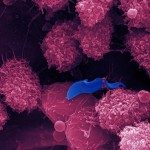About
The Fungal Biology and Pathogenicity Unit at Institut Pasteur is interested in the regulation of the yeast-to-hypha transition in C. albicans because of its role in biofilm formation and, more generally, in virulence. While yeast cells are able to colonize tissues and disseminate in the bloodstream, hypha formation contributes to escape from phagocytic cells and breach crossing of tissue barriers. Numerous cues, such as temperature, CO2, serum, have been described to regulate the yeast-to-hypha transition and an extensive knowledge has been gained from the signaling components that integrate these cues into the morphogenetic program. Yet, much remains to be understood of how extracellular cues are transduced and of the interplay between the different signaling pathway components.
Our study of the regulatory networks governing hyphal morphogenesis stems from several gain-of-function screens that have identified genes whose overexpression triggers pseudo-hyphal or hyphal morphogenesis independently of the occurrence of hypha-inducing cues. In particular, we have investigated the role of two heat-shock factor-like transcription factors, namely Sfl1 and Sfl2, and we have shown that they act as central “switch on/off” proteins that confer temperature-dependent regulation of morphogenesis.
Present research focuses on the characterization of additional transcription factors involved in C. albicans morphogenesis and their involvement in C. albicans stress responses.







